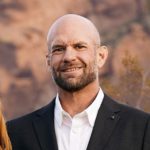Enrollment as a Turnaround Strategy: Leading a Proactive Recovery in Higher Ed
How Bethany College used enrollment as a turnaround strategy to overcome a $5M crisis—shifting from crisis management to mission-driven growth.
Branding
Terms like “brand storytelling” and “purpose driven” are powerful concepts that we should leverage in the education marketing space.
When applied correctly, these principles create a win-win situation for the student and the school by attracting and qualifying mission-fit students to the institution.
Unfortunately, “brand storytelling” and “purpose driven” are often co-opted by brands into serving corporate interests rather than the personal stories and purpose of the consumer.
The most important part of brand storytelling in higher education is creating stories where students can easily insert themselves and be an active participant.
Of course, the emphasis here is on the student and their story.
So how do we as education marketers promote our education brands without losing sight of the stories and passions of our target audience?
 To help us work out this natural tension, we invited Chad Wilson, the Vice President and Executive Creative Director of Marketing at Grand Canyon Education, to The Higher Ed Marketer podcast to show us how to use brand storytelling authentically.
To help us work out this natural tension, we invited Chad Wilson, the Vice President and Executive Creative Director of Marketing at Grand Canyon Education, to The Higher Ed Marketer podcast to show us how to use brand storytelling authentically.
Grand Canyon Education is an education service company that provides an array of support services in the post-secondary education sector, including work with their key client, Grand Canyon University.
Chad oversees everything encompassing strategic work from creative vision and development and consumer research to dynamic media plans and multi-platform initiatives.
In this episode, Chad breaks down purpose driven marketing and brand storytelling and why it is important in higher education marketing.
The very first thing we covered in our conversation was to distinguish what most brands are calling “purpose driven marketing” and what it really should be.
Purpose driven marketing has become a buzzword in the industry, not just in education marketing, but in the marketing industry [at large]. I think the term “purpose” has been co-opted by brands—big, small, and international—to fit within this trend of “purpose driven marketing.”
What I see out there in many instances is a lot of big brands with a board of directors that have to follow up with their ESG (Environmental, Social, and Governmental) metrics.
These ESG metrics could be just things that are natural to their business, sometimes they’re not. They have to answer to the board or their investors.
So they’re put in a position to say, “How do I find a purpose that we can rally behind [that will reach our ESG metrics], and then create a marketing connection, and then get that out to our consumer base? Hopefully, it’ll resonate!”
In a lot of those instances with a manufactured purpose driven marketing strategy, the audiences and the consumer see it.
Chad is hitting on something I see as a bigger problem across the education marketing space…
Because our schools have a purpose, or a mission, it’s easy to think of purpose driven marketing as marketing that’s driven by our organizational purpose.
But this kind of marketing backfires when the consumer sees it for what it is, “manufactured.”
Effective purpose driven marketing should look for the link between the purpose of the institution and the personal mission of the student.

Source: gce.com
This is a concept I call mission-fit marketing.
So how does Chad work out this tension between focusing on the purpose of the institution versus the purpose of the individual student?
There’s purpose built into the framework of what the institution does. Without purpose, Grand Canyon University wouldn’t exist.
What’s interesting about it is that the students that attend GCU, the purpose is in them.
So what Grand Canyon University does [first and foremost] is recognize that.
Grand Canyon University is [has] all the things you would think of in a higher education institution—excellent academic programs, bachelors, masters, and doctoral level programming, NCAA opportunities for the traditional campus.
But what’s different is the approach to the student because the purpose [of GCU] lives in the student in whatever their goal passions calling is.
That’s where the purpose and the beauty come from.
Understanding your values, your consumers’ values, and how they align, and then making sure that the DNA within both are symbiotic is really the core of it.
Purpose driven marketing takes the purpose of the institution into account first.
Then, it takes a genuine look at the purpose of the student, or their personal goal in life.
At that point, it seeks the point at which these values, or purposes, align in order to craft compelling marketing messaging.
These are elements of successful enrollment marketing, but there is another component that we spoke about in the podcast, brand storytelling.
Storytelling is what connects with students and their families at the emotional level.
This piece is vital because this is how students are making decisions throughout their higher education journeys.
With brand storytelling, you can connect with prospective students at an emotional level while explaining your mission and the programs you have to offer.
I call it undeniable, authentic storytelling.
What that ultimately means is you have so many stories [that it is almost impossible to choose which ones you should be telling your audience.] [You] probably trip over stories all day just walking down the hall!
What are you going to do with those stories? How are you going to tell them? Which one should you tell first? Second, third, fourth?
But when you’re talking about undeniable, authentic storytelling, [you want to ask yourself the question,] “Is there something that other people within the subset can relate to? Can they see themselves in that story?
Can they imagine themselves at the end of that story?”
“Oh! That could be me earning that particular degree!” Or, “This story really resonates to me because I have a sister or a brother or a mom or a dad that had a similar story.”
The campaigns we’ve rolled out over the years that really lean into that are the ones that resonate the most, that move people from fence sitters onto the right side of the fence.
My point is, if you can find those stories and tell them in a compelling way—so people get emotionally invested because they can relate to it—then you’re winning there.
I’m sure sometimes people may get tired of me talking about brand storytelling and the need for emotive messaging.
But stories are the way in which prospective students are able to see themselves in your school.
And that is exactly what you need to happen for them to make that final, all-important decision to enroll.
When choosing stories for your marketing messaging, look for those with an emotional connection you can make with the audience.
This kind of brand storytelling puts your audience in the middle of the action as they identify with the students, faculty, or family members who are sharing their story.
Like all of our blog post reviews of The Higher Ed Marketer podcasts, there’s so much more to learn in the podcasts themselves.
Listen to our interview with Chad Wilson to get even more insights into:
Then you’ve got to know how to write for the web. That’s why we want to send you our popular ebook: Writing for the Web: 7 Secrets to Content Marketing Success for Education Marketers!
With this helpful resource, you’ll learn how to:
In short, you’ll be able to write the copy that makes your digital marketing strategy work for you. Download your copy today!
Featured image via gce.com
Subscribe to The Higher Ed Marketer podcast today!